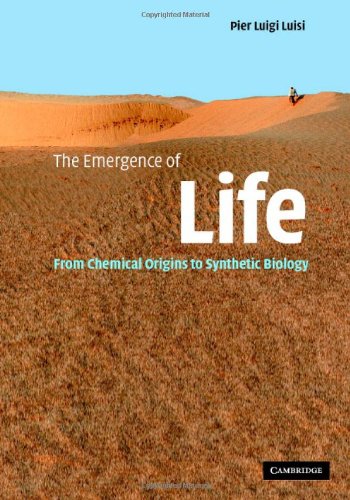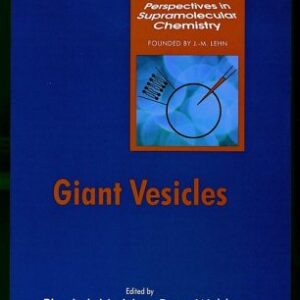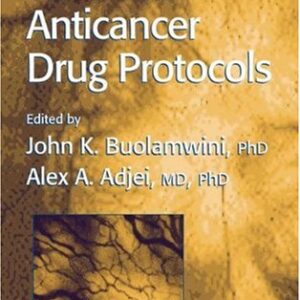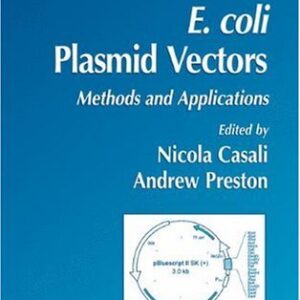Pier Luisi has done an excellent job in bringing in many relevant viewpoints, methods of approach, and the current standing of Origins of Life research as of 2006. This book is not an easy read due to it’s general technical language and is at a higher caliber than “popular science” books. This book is aimed towards Biochemists, Physical Chemists, and Molecular Biologists, but there are a few sections where a lay reader will understand and not get confused by much.
We have come along quite a bit since the Urey-Miller experiment and Oparin and now we currently face a complicated and sophisticated understanding of how hard it is for scientists (mainly Biochemists and other Chemists) to synthesize fundamental life. This work brings the reader up to date with detailed and technical information from research papers that have been formerly published from all over the world. For this work, it is very much recommended that anyone who wishes to read it, to be familiar and have a decent background with Biochemistry, Organic Chemistry, Physical Chemistry, and General Chemistry to get the most out of this technical book and to understand some of the significance of the information presented for example, understanding chemical pathways and concepts like hydrolysis would definitely help. After Chapter 9 Luisi gets more technical and many may lose what he is trying to say.
This book is very helpful too for anyone’s world view , whether it is believed nature is all that there is or if is believed a Cosmic Biochemist/ Physical Chemist generated life or allowed for life to emerge. I personally doubt that nature alone has the capacity to spawn life on her own due to the complicated chemical behavior of molecules and energy considerations of chemical bond and so it seems a Cosmic Biochemist would have had to have been involved in the process of generating and synthesizing life indefinitely. No need to worry that belief in a Cosmic Biochemist will stop or halt any further research on the topic of Origins of Life. Newton’s belief in God didn’t stop or impede his work on mechanics, optics,and calculus, nor did Francis Bacon’s belief in God impede his synthesis for the “scientific method(s)”, nor did Hippocrates views of gods impede his views of illnesses as having origins in nature and not by the will of the gods; affect his practice of medicine, nor did Pythagoras’ view of God impede his views on geometry and harmony in nature, nor did Lord Kelvin’s belief in God impede his work on the absolute thermometric scale and the rest of his labors on the age of the earth and physics, nor did Gibbs’, Planck’s, and Joule’s belief in God impede their work on Thermodynamics nor did Ibn-Sina’s belief in God impede his research on how to do surgery and create surgical instruments in the Middle Ages, nor did Gregor Mendel’s belief in God impede or substitute his research on genetics via hybridization of peas, nor did Jean-Baptiste Lamarck’s view of God impede him from making the first Evolutionary Theory, nor did Carl Linnaeus’ belief in God impede or substitute his foundational work on taxonomic classification of plants and animal species, nor did Robert Boyle’s belief in God impede or substitute his research on “Ideal” gases, nor did Faraday’s and Maxwell’s belief in God impede their work on electromagnetic theory, by the way.
Simply put, belief in God does not result in “God-of-the-gaps” fallacy, nor does belief in God substitute for or impede research. All of the previous theists and many many more never stopped at “God did it and that’s the end of that”. They asked “how was it done and how could it have been initiated in the first place” and tried to seek for explanations for natural phenomenon just like anyone else. If God creates, we can try to replicate that which was created since if it was done before, then we should be able to do it again, technically. This is the general theistic scientist logic, which is good because it assumes that many things can be done and systematically solved or reconstructed – we just need to look for the right pathways and conditions to start up a given system. If anything, non-theistic scientists generally commit the “Chance-of-the-gaps” fallacy where chance is THE explanation given for some natural phenomenon that they themselves cannot explain. Either that or “Coincidence-of-the-gaps” fallacy. Both of these fallacies don’t necessarily assume that a problem can be solved at all. “Chance” is a funky word that really means “ignorance” when fellow scientists use it as an explanation, by the way.
With the overwhelming abundance of hydrocarbons found in oil (more than 20,000 according to BP and Chevron when they gave a talk to our Chemical Engineering classes) and rich biochemical residues that have existed for presumably hundreds of millions of years in isolation with millions of opportunities to spawn life in these oil fields from all around the world, it sure feels pretty nonsensical that life could really from by nature alone since no life forms or early prebiotic chemical precursors to life have ever been found despite the interest in oil fields for more than a century. Life should have formed and should STILL be forming today (carbon atoms are very flexible under many conditions, but maybe they are too flexible to form anything as big as a cell without careful control, which nature generally doesn’t do), especially with the abundance of biochemical materials that can used to form life. Truly, life forming is a ridiculously rare event since it only happened once on this planet. Life hasn’t been observed to spawn on its own by any scientist despite the rigorous search and attempts at synthesis. If you want to see more on the difficulty of spawning life step into the biochemical universe of how to generate simple life forms. You’ll see what I am talking about more clearly. This book will give insights to the limits and capacity of Nature alone. Life emerging is definitely no simple matter and nature seems to posit many Biochemical impedances that are pretty important to take into consideration. For example, all chemical reactions and chemical properties and physical properties are influenced and directly affected by changes/effects of: temperature, pressure, density, viscosity, thermodynamic stability, dilution, concentration, pH, chirality, hydrophobicity, hydrophilicity, agitation, polarity/nonpolarity, limiting reagents (reactions are limited by the molarity of one given reactant), steric hindrance (big molecules rotating fast blocking reactants from reacting, thus little or no reaction occurs), vapor/liquid equilibria (if these two phases coexist in a given environment), liquid-liquid equilibria, crystallization, diffusion, oxidation, reduction, solubility, reversibility of chemical reactions, activation energies, entropy, emergent physical and chemical properties from constituent atoms, and many other factors.
Low entropy (high order and low dissociation) and energy input from an outside source are two basic necessities for elevate a chemical residue to “biotic”, functional, and autonomous. The prebiotic chemical system that develops to a biotic system, must not be like a general chemical residues which can dissociate, decompose, denature, and break down back to its original components. In other words, chemical irreversibility is necessary for a successful early biotic form that emerges from prebiotic chemistry. Decomposition is the enemy of every living cell.
Stuff like this makes for Origins of Life research so interesting and very sophisticated.
Luisi’s “Why this…and not that?” approach sets the difficulties and solutions into perspective on the plausible and implausible ways life came to be with all of it’s sophistication.
Here is a detailed look by Chapter on stuff that is mentioned and detailed in this textbook:
Ch 1: Discourse on creationism and science; two main views on the emergence of life: Contingency and Determinism; plausibility of multiple Origins of Life at many locations and multiple times (11); SETI, the Anthropic Principle
Ch 2: Discourse on the Difficulties of defining life everywhere as “Darwinian” (22); Intrinsic vs Operational descriptions; more than 30 different models of Origins of Life have been generated thus far (26); popular textbook “RNA emerging out of some prebiotic or primordial soup” lacks evidence and is naive according to Luisi (28); problems in generating RNA; Clay Deposits may function as storage for needed chemical products found in life forms; impedances and improbabilities of prebiotic metabolism (30-40);
Ch 3: Discourse on the Oparin-Miller Soup and the Urey-Miller Experiment; 40,000 tons of stardust settling on Earth per year (47); Polycyclic aromatics found in the Cosmos, hydrocarbons make 10% of Cosmic Carbon, C8’s detected in space, what is not found in space: peptides and mononucleotides, chemical extraction from meteorites is difficult (49); why alpha-amino acids formed in the Urey-Miller Experiment (52); chirality (D or L) of amino acids may be nonfunctional for life
Ch 4: Discourse on benefits of enzymes and proteins being long chained entities, proteins and nucleic acids as complementary co-polymers, reaction rates have not been done for amino acids, the problem of peptides as being insoluble and having thermodynamic constraints, weak point of prebiotic chemistry is the weak “prebiotic activation” where activation energy is usually not satisfied to proceed without aid to reaction; chemical reactions for long chain polymers are done on clays since long chain polymers are impeded in reactivity in water (problems of hydrolysis) (59-62); volcanic gas (COS) can form some polypeptides, but not long chain peptides with many residues (65); both polynucleotide and polypeptide research is young






Reviews
There are no reviews yet.